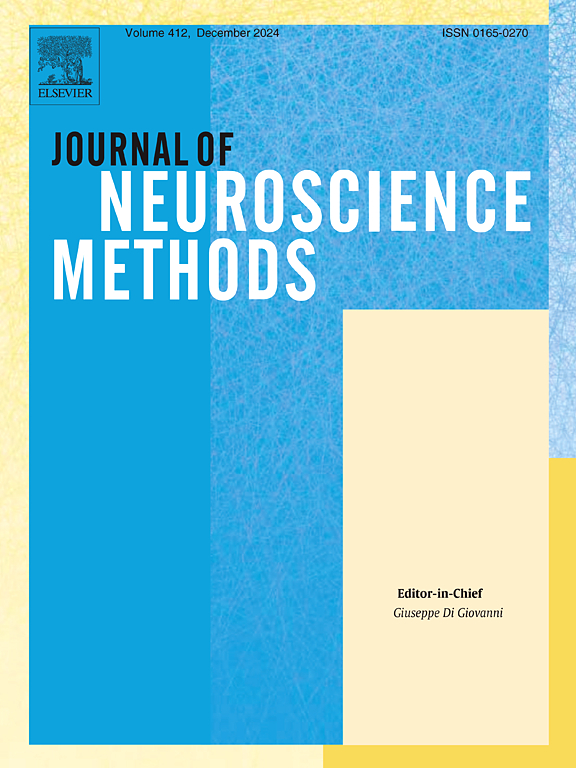uhplc -高分辨率质谱法对脑组织代谢组学预处理策略的比较评价。
IF 2.7
4区 医学
Q2 BIOCHEMICAL RESEARCH METHODS
引用次数: 0
摘要
背景:大脑是人类最复杂的器官,包含多种代谢物,对理解大脑功能、疾病、药物作用和成瘾至关重要。其可液化的性质使得快速制备对保持代谢谱至关重要,需要物理均质才能释放代谢物。为了确定代谢组学高分辨率质谱分析中大脑样品的最佳制备工艺,我们使用UHPLC-HRMS评估了四种均质技术和三种提取方案。新方法:确定了干磨-单相提取相结合的脑代谢组学样品制备方法。结果:比较两种方法的特征峰数、峰面积变异系数(CV)和峰面积,评价方法的覆盖率、重现性和灵敏度。干磨法在4种均质方法中检测到的特征峰最多,且获得的峰面积优于其他均质方法。在提取方法方面,除酪氨酸外,两种提取方法的峰面积差异无统计学意义(p < 0.05),均高于两相提取方法(p < 0.05)。此外,单相提取法的重现性明显优于其他两种方法。对比:干燥研磨和单相提取方法与UHPLC-HRMS具有良好的相容性,与现有方法相比,代谢物覆盖范围更广,性能更优越。结论:干磨和单相提取方法推荐用于大脑代谢组学,为高分辨率质谱研究提供了更高的代谢物覆盖率、重现性和适应性。本文章由计算机程序翻译,如有差异,请以英文原文为准。
Comparative evaluation of cerebral tissue pretreatment strategies for metabolomics using UHPLC-high-resolution mass spectrometry
Background
The cerebrum, as the most complex human organ, contains diverse metabolites vital for understanding brain functions, diseases, drug effects, and addiction. Its liquefiable nature makes swift preparation crucial to preserve metabolic profiles, with physical homogenization needed to release metabolites. To determine the optimal preparation procedures for cerebrum samples for high-resolution mass spectrometry in metabolomics, we evaluated four homogenization techniques and three extraction protocols using UHPLC-HRMS.
New method
A combination of dry grinding and monophasic extraction was identified as an optimized sample preparation approach for cerebrum metabolomics.
Results
The number of feature peaks, coefficient of variation (CV) of peak areas, and peak areas were compared to evaluate the coverage, reproducibility, and sensitivity of the methods. The dry grinding method detected the most feature peaks among four methods of homogenization, and the peak areas obtained were superior to other homogenization methods. In terms of extraction methods, there was no significant difference in peak areas (except for tyrosine) between monophasic and two-step extraction methods (p > 0.05), both of which were higher than the biphasic extraction method (p < 0.05). Additionally, the reproducibility of the monophasic extraction method was significantly better than the other two methods.
Comparison
The dry grinding and monophasic extraction approach demonstrated excellent compatibility with UHPLC-HRMS, offering broader metabolite coverage and superior performance compared to existing methods.
Conclusions
The dry grinding and monophasic extraction method is recommended for cerebrum metabolomics, providing enhanced metabolite coverage, reproducibility, and adaptability for high-resolution mass spectrometry studies.
求助全文
通过发布文献求助,成功后即可免费获取论文全文。
去求助
来源期刊

Journal of Neuroscience Methods
医学-神经科学
CiteScore
7.10
自引率
3.30%
发文量
226
审稿时长
52 days
期刊介绍:
The Journal of Neuroscience Methods publishes papers that describe new methods that are specifically for neuroscience research conducted in invertebrates, vertebrates or in man. Major methodological improvements or important refinements of established neuroscience methods are also considered for publication. The Journal''s Scope includes all aspects of contemporary neuroscience research, including anatomical, behavioural, biochemical, cellular, computational, molecular, invasive and non-invasive imaging, optogenetic, and physiological research investigations.
 求助内容:
求助内容: 应助结果提醒方式:
应助结果提醒方式:


